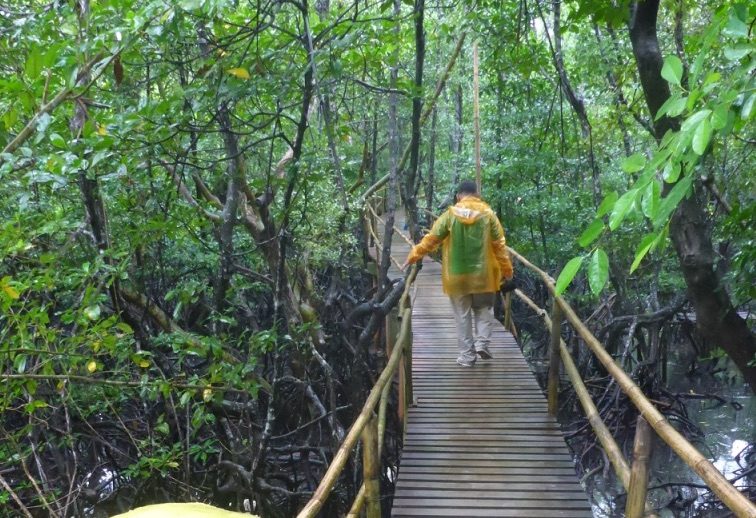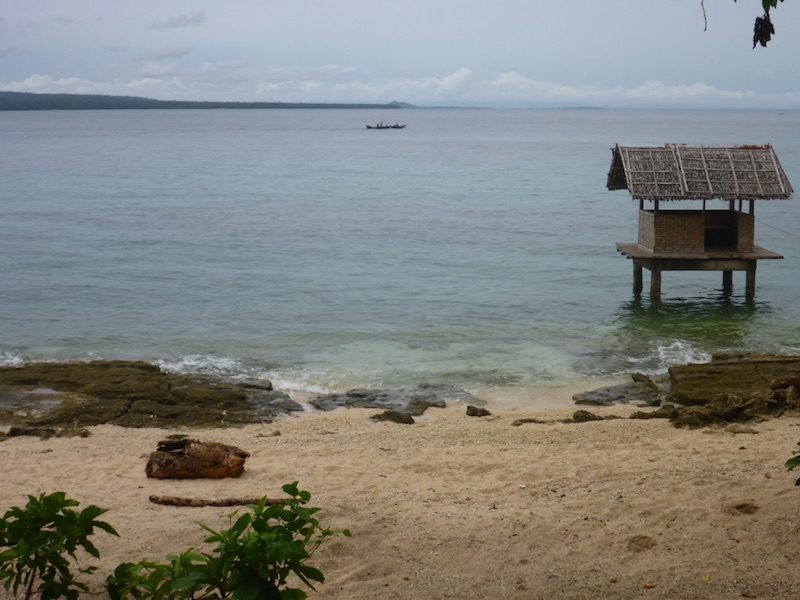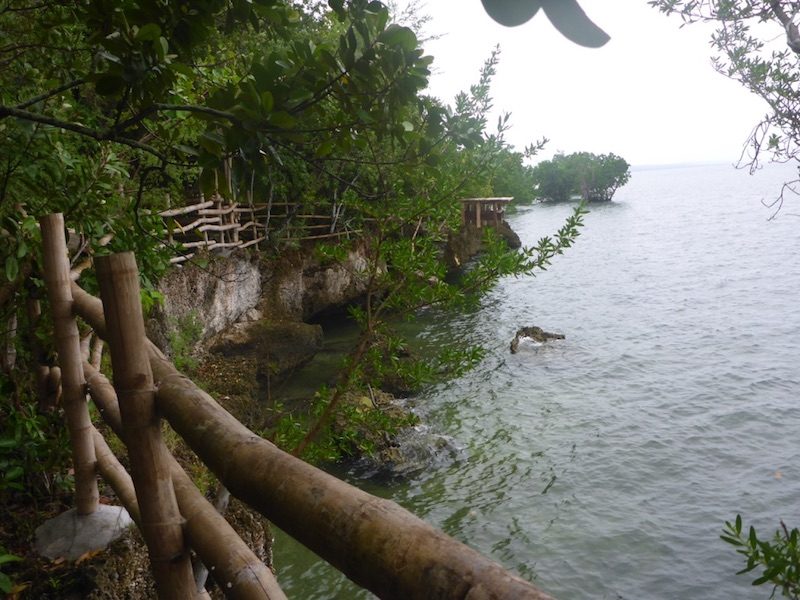SUMMARY
This is AI generated summarization, which may have errors. For context, always refer to the full article.

MANILA, Philippines – When super typhoon Yolanda lashed the Visayas in 2012, it took 5 days before relief goods reached the town of Pilar, in the Camotes group of islands in Cebu. Yet, no one went hungry among its 11,000 residents, according to Susan Cataylo, who heads the disaster risk reduction office in the municipal government.
“Our marine sanctuary gave us the food we needed,” Cataylo said.
The tide was low during the storm and its aftermath, and the coastal dwellers harvested a bonanza of shells, fish, and other seafood swept to the shallows from the Pilar Municipal Marine Park. The 179-hectare protected area includes a 20-hectare no-take core zone, which means fishing is banned inside the waters marked by white buoys.
The spillover of marine life from the park was a blessing for Pilar’s residents, who realized that conservation can spell survival when disaster strikes.
Located in the smallest island in the Camotes group, the town of Pilar is striving to protect its natural ecosystems – from the forests in the uplands to the coral reefs in the sea – as a way of shielding the vulnerable coastal community from the impact of climate change.
Pilar Mayor Eufracio Maratas established the municipal marine park in 2005, when he was still a councilor. Inside the sanctuary are coral reefs, seagrass, and mangroves that serve as vital habitats for marine life. Fisheries laws were strictly enforced, to restore abundance in fishing grounds that had been decimated by dynamite fishers. (READ: Mangroves are PH’s best shield vs climate change)
Increased fish catch soon gave islanders enough income to send their children to school, says Cataylo. Coastal villagers helped manage the park and monitor marine resources. A trust fund was set up, and volunteer guards got a share from fines imposed on violators. The innovations gave Pilar the award for best marine protected area (MPA) in 2009 from the MPA Support Network, with the P100,000 prize going to communications equipment for fish wardens.
Combating sea level rise
Islanders had began to observe the rising sea level in the previous decade.
“The seawater is nearing the level of the causeway at the pier,” said Cataylo, adding that it used to be much farther down.
The situation worsened after Yolanda, which defoliated the mangroves and ravaged beaches that had already been damaged by rampant collection of sand used as building material for houses and roads.

The town began a beach reforestation project using romblon plants to mitigate sea level rise. It was also replanted, along with bamboo, in denuded slopes in the barangays of Esperanza and Dapdap.
The two barangays share a Marine Sanctuary and Mangrove Reserve, a popular tourist destination that provides an opportunity to enhance awareness on the impact of climate change through signboards identifying climate-resilient tree species.
The government also embarked on a 40-hectare mangrove reforestation project to protect Pilar’s coastline from surging waters. Meanwhile, students planted endemic species of trees in upland areas, as part of the ridge-to-reef strategy to prevent further erosion that could smother coral reefs with silt. (READ: #HackSociety: 6 ideas for a climate-resilient PH)
Nursery for baby danggit
In Barangay Cawit, there’s a 5-hectare marine sanctuary with a wide expanse of seagrass beds. Fishers used to harvest the fish fry of danggit (rabbitfish) and turn them into ginamus, says barangay Captain Lilibeth Donasco, so they decided to make the area a no-take zone. (Ginamus is a native condiment popular in Visayas and Mindanao.)
The marine reserve is located in front of the barangay hall, making it easy to protect the danggit nursery, and allowing the fish to grow to adult sizes and repopulate the seas.

Just across Cawit is Poro island, and between them is a shoal that is considered one of the richest fishing grounds in the Camotes Sea. The shallow sandbank was declared a marine sanctuary a few years ago, although just like the Camotes Island Mangrove Swamp Forest Reserve, which is under the National Integrated Protected Areas System, there is little marine governance in place due to lack of interest and funds.
As a 5th class municipality that relies on the bounty of the sea for its 1,800 small-scale fishers, Pilar benefits from the support of residents to conserve marine resources, as well as non-government organizations such as Plan International and Rare.
When he took office last year, Mayor Maratas allocated government funds for coastal resource management that includes financial incentives for guards who take turns protecting the marine sanctuaries.
Five years after Yolanda, and even more destructive typhoons that followed through the years, the town of Pilar is proving that small steps can be taken to help fishers adapt to the inevitable impact of climate change. There is still much to be done, and Cataylo is hoping that their efforts can be sustained in the years to come. – Rappler.com
The author is the senior communications manager in the Philippine office of Rare, an international conservation organization that promotes sustainable management of municipal waters and responsible fishing behavior among Filipino fishers. For more information, visit www.rare.org/philippines
Add a comment
How does this make you feel?
There are no comments yet. Add your comment to start the conversation.